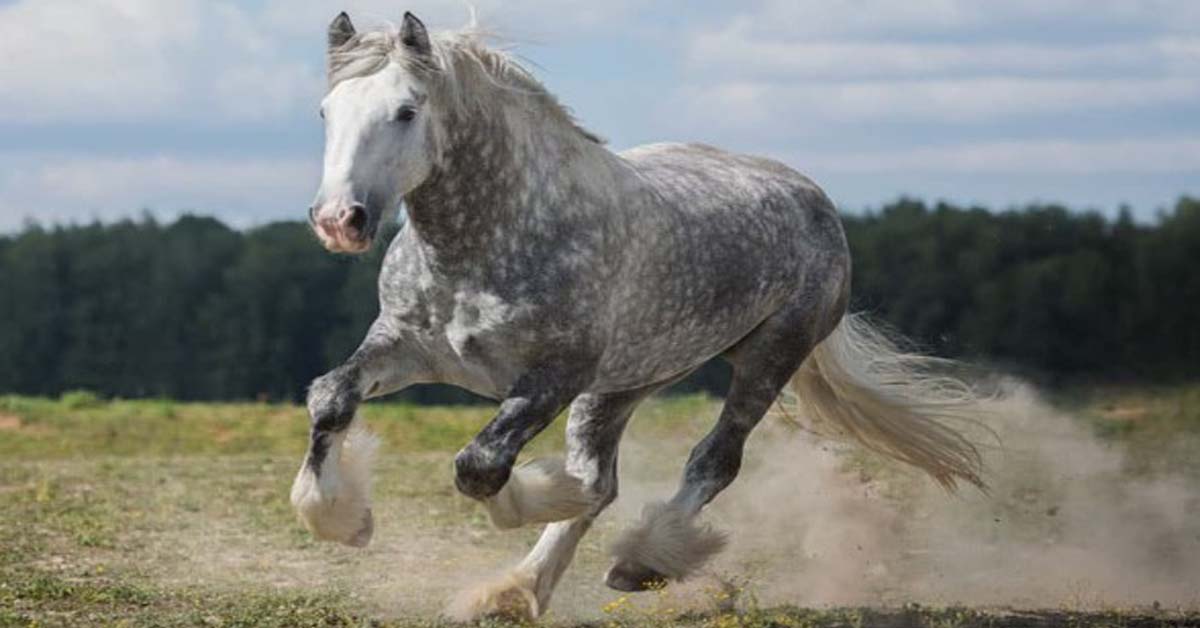The Blue Lacy, known also as the Lacy Dog, embodies an energetic, intelligent, and trainable nature, thriving when engaged in purposeful tasks within ample open spaces.
Despite its name, Blue Lacys can exhibit red or tri-colored coats, all carrying the blue color gene. The “Lacy” moniker, rather than describing the dog’s appearance, originates from the family responsible for its early breeding efforts.
Originating in 19th-century Texas, the Blue Lacy was bred for herding, tracking, and estate duties. These dogs boast resilience, adaptability, and quick learning abilities, yet their high energy levels and intensity make them unsuitable for apartment living or inexperienced owners.
While Blue Lacys can integrate well into families and excel in professional roles with proper training, they are sensitive and may not respond favorably to harsh discipline. Early socialization is crucial, given their natural territorial instincts, wariness of strangers, and strong prey drive, which could lead to aggression towards smaller animals and pets if not properly managed.
Through confident, positive reinforcement-based training, Blue Lacys can become loyal, protective, and competent family members, eager to please and capable of meeting any challenge when provided with consistent guidance and meaningful tasks by committed owners.
- Blue Lacy Origin: United States (Texas)
- Blue Lacy Height: 18–23 inches
- Blue Lacy Weight: 30–55 pounds
- Blue Lacy Lifespan: 12–16 years
- Blue Lacy Size: medium (26-60 lbs.)
- Blue Lacy Coat Colors: Blue (gray, light silver, charcoal), red (light cream, rust), or tri-colored
Breed characteristics
Throughout history, the Blue Lacy has thrived on having a purpose — along with plenty of room to roam. These energetic and dedicated companions excel at managing a variety of animals, from longhorn cattle to poultry. Trusted as working dogs, Lacys have served as skilled herders and drovers, fulfilling essential roles in various tasks throughout the ages.
| Blue Lacy Adaptability: 3Point |
| All Around Friendliness: 3Point |
| Health And Grooming Needs: 3Point |
| Trainability: 5Point |
| Physical Needs: 5Point |

History of Blue Lacy Dog
The Blue Lacy dog derives its name from the Lacy siblings: Frank, George, Ewin, and Harry, who relocated from Kentucky to Texas in 1858, settling in the Hill Country. Specifically bred for versatility, these canines were meant to excel in various tasks.
According to the Lacy family, the breed was a mix of English Shepherd, greyhound, and wolf. However, the Blue Lacy faced a near-extinction period in the early to mid-1900s due to advancements in ranching technology, reducing the demand for herding dogs.
To preserve the breed and its working abilities, the National Lacy Dog Association was established. It is recognized and registered by both the National Lacy Dog Registry and the Animal Research Foundation. In 2005, the Texas Legislature and Governor designated the Blue Lacy as the Official State Dog Breed of Texas.
Today, the Texas Blue Lacy remains utilized in estate work and tracking in southwestern U.S. regions. They also excel as companion animals and skilled hunting and search-and-rescue dogs.
Lacy dogs typically exhibit strong herding instincts and can be trained for stock dog trials or obedience competitions. In recent years, they have gained recognition for their exceptional tracking abilities, being sought after for locating lost game animals.
Blue Lacy Appearance
Sleek and muscular, the Blue Lacy captivates with its striking appearance. These medium-sized dogs typically stand between 18 to 23 inches tall and weigh 30 to 55 pounds. Possessing strength, agility, and an air of confidence, they embody both physical prowess and aesthetic appeal, as noted by the Lacy Game Dog Registry (LGDR).
Despite their name, the coat colors of Blue Lacys can vary considerably. The “blue” hue ranges from a light silver-gray to nearly black, and these dogs can also exhibit shades of red, tan, cream, and tri-color patterns (blue with red points), according to the LGDR breed standard. Whether adorned in blue or tri-color, their coat is characterized by its short, glossy texture, requiring minimal grooming.
A distinctive feature of the breed is their slate blue coat and nose, often inherited as a unique trait, along with white markings on their chests and paws. However, perhaps the most captivating aspect of these dogs is their strikingly bright, almond-shaped eyes, which can range in color from orange to tan, adding to their allure.
Blue Lacy Temperament
Blue Lacys typically exhibit strong loyalty and devotion to their families, forming deep bonds with their owners. They thrive on constant companionship and may experience significant separation anxiety when apart from their loved ones. With their high energy levels and innate drive to work, these dogs require ample stimulation and engagement.
Ideally suited for individuals who lead active lifestyles, Blue Lacys are best matched with owners who are either farmers, hunters, or engage in other highly active pursuits that can provide them with the necessary physical and mental stimulation they crave.
Blue Lacy Personality
Despite being named “Blue” Lacy, this medium-sized, well-built dog can display a variety of coat colors. While often categorized as a type of Cur, it’s important to note that the term “cur” is commonly misunderstood. In many regions, including the United States, the term “cur” does not imply a mixed or undesirable breed, contrary to its connotation in Great Britain and Ireland.
Blue Lacy Health & Problems
Lacys are generally robust and enjoy a healthy lifespan ranging from 12 to 16 years. While they typically don’t suffer from major health issues apart from occasional food sensitivities and skin problems, they may be prone to a rare condition known as color dilution alopecia, resulting in patchy hair loss.
It’s essential to conduct daily inspections for fleas and ticks, particularly during the warmer months. Utilizing a flea comb can help detect and remove pests, and there are various methods available for flea and tick control. Consulting your veterinarian for personalized recommendations is advisable.
Like many breeds, Lacys can develop common orthopedic issues such as hip dysplasia or elbow dysplasia, along with occasional skin problems, hypothyroidism, and food sensitivities. Additionally, blue and tricolor Lacys may be susceptible to color dilution alopecia, a condition characterized by hair loss and skin complications. Regular veterinary care and proactive monitoring can help manage these concerns effectively.
Dental Health Checkup
Dental issues are the most common health concern among pets, affecting around 80% of all dogs by the age of two, and unfortunately, Lacy Dogs are more predisposed to dental problems compared to other breeds. It typically begins with the accumulation of tartar on the teeth, leading to infections of the tooth enamel and roots.
Maintaining proper dental care is crucial for every dog, especially for the Lacy Dog. It’s recommended to brush your dog’s teeth at least 2 or 3 times a week using a special toothbrush designed for dogs, with guidance from your veterinarian on proper technique.
Neglecting your pet’s dental hygiene can result in tartar buildup, leading to gum disease and tooth loss. Moreover, poor dental health can impact other areas of the body as well. Regular dental care is essential for ensuring your Lacy Dog’s overall well-being and longevity.

Blue Lacy Puppies Care
While Lacys can be wonderful companions and are generally good with children, they require a calm and assertive leader who can establish clear and consistent rules. They are highly trainable and thrive with regular physical and mental stimulation.
Blue Lacys have a natural inclination towards territorial behavior and will diligently protect their property and family. However, they may not always integrate well into households with other pets, as their strong prey drive can pose challenges in such situations.
Best Food For
Feed Healthy food
Providing nutritious food is paramount for the well-being of your canine companion. Thankfully, there is a wide array of healthy options available today, allowing you to select the best diet for your dog’s needs.
Ensuring a nutritious diet is particularly crucial for young Lacy dogs, who may not have hearty appetites compared to other breeds of similar size. Incorporating meat-based toppings or bacon grease into their meals can help entice them to eat.
Blue Lacys typically thrive on high-quality dog food, whether commercially produced or prepared at home under the guidance of your veterinarian. Generally, they benefit from a diet rich in protein and low in grains, which can aid in managing issues like diarrhea and bloat.
It’s essential to always provide clean, fresh water for your dog to drink. Additionally, their dietary requirements, including portion size and feeding frequency, will evolve as they grow and develop.
Feeding your puppy multiple times a day supports healthy growth and development, while regular exercise helps prevent obesity and promotes overall fitness in your Lacy game dog.
Feeding Plan
- Blue Lacy pups between 8 and 12 weeks old need 4 refections in 24 hours.
- Blue Lacy puppies, 3 to 6 months old, should be fed 3 refections per day.
- Feed pups 6 months to one- time-old two refections in a day.
- When the blue lacy reaches his first birthday, one coliseum in a day is enough.
- occasionally blue lacy, still, prefer two lighter reflections. It’s your job to acclimatize to your blue lacy’s eating schedule.
High-quality dry canine food ensures a well-rounded diet to grow blue lacy and may be mixed with canned food, broth, or water. Your blue lacy may also dig fruits and vegetables, cabin rubbish, and cooked eggs, but these additions shouldn’t be further than 10 pct of his diurnal food.
Coat Color And Grooming || blue lacy colors
Despite their name, Blue Lacys exhibit three distinct color variations. “Blues” can range from silver-gray to nearly black. “Reds” come in shades from light cream to a reddish-brown or rust color. “Tris” is tri-colored, featuring a blue base coat with red markings, along with white patches on the belly, chin, or paws.
Their coat colors often accentuate their striking amber or hazel eyes.
The Blue Lacy’s coat is short and sleek, with minimal to no undercoat. While they shed moderately throughout the year, shedding can be heavier during seasonal changes. Fortunately, they require minimal grooming. Regular brushing is sufficient, and baths should be given as needed.
Blue lacy Training
Blue lacy PuppyDog Training
The Lacy dog is bred for trainability and manageability, though they may pose a slight challenge for novice owners. These intelligent dogs are fast learners and adapt well to training. They exhibit high activity levels as puppies and maintain their intelligence, sociability, tenacity, and physical vigor into adulthood.
Like most breeds, Lacys require consistent mental and physical stimulation to thrive. Without proper outlets for their energy and intellect, they may become bored, restless, and prone to destructive behaviors.
Blue lacy jalopy training
Crate training is widely regarded as one of the most efficient and successful methods for training a Lacy puppy. It can also serve as an effective tool for house-training a Blue Lacy puppy. Puppies naturally avoid soiling their sleeping or resting areas when provided with appropriate opportunities to eliminate elsewhere.
Moreover, crate training aids in teaching your puppy bladder and bowel control. Rather than relieving themselves whenever they please, they learn to hold it and eliminate it at scheduled intervals.
Behavioral training
Before initiating basic commands, building a strong emotional bond between the dog and the owner is paramount. Behavioral training holds significant importance for all dogs, necessitating canine behavior training for every owner at some point.
Such training is invaluable for canine care. Initially, it’s essential to identify common behavioral issues such as jumping, aggression, food guarding, excessive barking, mouthing, biting, and separation anxiety. Addressing these concerns effectively through training ensures a well-behaved and well-adjusted dog.
Obedience training
Obedience training typically pertains to the training of dogs and is commonly used in that context. It encompasses a spectrum of training, starting from basic commands such as “sit,” “down,” “come,” and “stay,” to advanced levels of competition seen in organizations like the American Kennel Club.
Blue lacy Exercise
The Blue Lacy is renowned for its work ethic and loyalty, presenting a considerable challenge for active owners to fulfill its exercise needs. Regular exercise not only helps prevent boredom, which can lead to destructive behaviors but also contributes to the dog’s overall well-being.
Lacys typically exhibit herding instincts and can excel in stock dog trials or obedience competitions. More recently, Lacy dogs have gained recognition for their exceptional tracking abilities and are sought after for their talent in locating lost game animals.
Effects to consider espousing a Blue Lacy
If you’re a confident and active dog owner seeking a loyal, intelligent, and protective companion, the Blue Lacy may be a perfect fit for you. However, it’s crucial to consider a few factors before committing.
Firstly, evaluate how much time your new family member will spend alone. Remember, puppies require constant attention and care.
Ask yourself if you’re able to take your dog for multiple walks throughout the day and if your dog can hold its bladder for extended periods.
Consider the benefits of adopting an adult dog, as they may already have some training and require less constant supervision compared to puppies.
If you’re unsure about committing to a specific dog breed or individual, consider fostering as a trial period to assess compatibility with your family and lifestyle.
Blue lacy Adoption Center
Other Dog Breeds and Further Research
FAQs
Blue Lacy Puppy Dog Price:
The cost of adopting a Blue Lacy puppy dog is typically around $300, covering the expenses associated with caring for the dog before adoption. However, purchasing Blue Lacy puppies from breeders can be considerably more expensive, ranging from $800 to $1,000, depending on their lineage.
If you’re interested in adopting a Blue Lacy, platforms like Borrow-a-Pet or BlueLacy.com can assist you in finding one nearby. Utilize their search tools to browse adoptable Blue Lacys in your area.
What Breeds Contribute to a Blue Lacy?
The Blue Lacy’s lineage traces back to the Lacy family, who settled in Burnet County, Texas, in 1858. It’s believed that the breed is a mix of Greyhound, an unspecified scent hound, and either a runner or an Argentinian wolf.
What Mixes Are Found in a Blue Lacy?
While the exact mix of breeds used to develop the Blue Lacy is not definitively known, it may include the English Shepherd, Greyhound, and scent hound. Some sources suggest that a wild canine resembling a wolf or runner also contributed to the breed’s development.
What Does the Blue Lacy Symbolize?
Designated as the official state dog of Texas in 2005 by former Governor Rick Perry, the Blue Lacy embodies the state’s resilient and hardworking heritage, as well as its relaxed and friendly demeanor.
Is a Blue Lacy a Suitable Dog?
Blue Lacys are known for their loyalty and protective instincts towards their family. They are generally good with children and non-aggressive, but due to their high energy levels, they may not be the best companions for very young children.












One thought on “Blue Lacy Dog || Full Breed information”